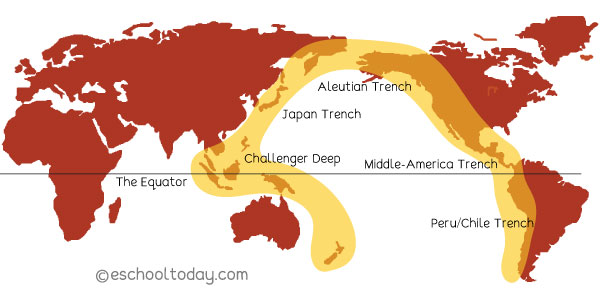- Earthquakes
Important terms to know about earthquakes
Let us take a moment to learn about these terms to help us understand earthquakes better.
Tectonic Plates:
These are huge layers that make up the earth’s upper layers. They continually stretch, move, slide, and collide against each other. Even though they are always moving, we do not feel it because they move very slowly. Each plate is about 50 to 250 miles (80 to 400 km) thick.
Faults (or Fault plane or fault lines):
These are weak lines that can develop in the plates, usually on the surface of the earth. There are different types of faults, and the major types include dip-slip normal, dip-slip reverse, strike-slip, and oblique-slip. The hypocenter is the location below the earth’s surface where the earthquake starts. The epicenter is the location directly above it on the surface of the earth.
Seismograph and The Richter Scale (RS):
The seismograph is a device that scientists use to measure the magnitude of an earthquake. The Richter Scale, on the other hand, is a scale or measure that is used to compare earthquakes. It is calculated on a scale of one to ten. For example, an earthquake measuring 4 on the RS is ten times more than a measurement of 3, and an earthquake measuring 8 on the RS is 10 times more than one that measured 7 on the RS. As a guide, an earthquake measuring 3-5 is considered minor, 5-7 is moderate, 7-8 is major, and 8 or more is considered extremely powerful and usually very devastating.
Ring of Fire:

It is the coastal belt of the Pacific Ocean (see diagram) that is the home of many volcanic eruptions, plate movement, and major fault lines. About 90% of the world’s earthquakes and 81% of the world’s largest earthquakes occur along the Ring of Fire. The Ring of Fire is a direct result of plate tectonics and the movement and collisions of lithospheric plates.
